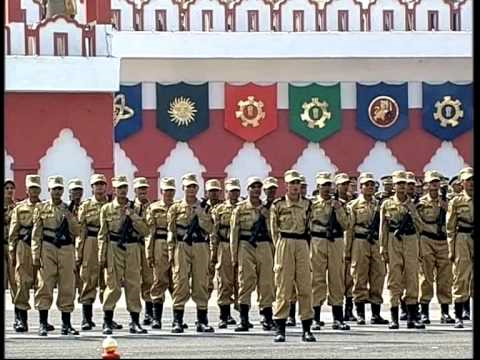Posted by
The Open Page |
7/3/2020

What is CISF?
The CISF or Central Industrial Security Force is the central armed force of India. Although formed in the year 1969, CISF was established into its current state on 15th June 1983. Major duties of CISF include safeguarding sensitive government buildings and Delhi Metro. It also plays a vital role in providing airport security.
Duties of Central Industrial Security Force
- Provides security for more than 300 industrial units, and government infrastructure projects all over the country.
- Atomic power plants, mines, oil fields and refineries, Space installations, major ports, airports, and hydroelectric/thermal power plants owned and controlled by Central Public Sector Undertakings (PSUs), and currency note presses producing Indian currency are protected by CISF.
- It also provides consultancy services to private industries and other organizations within the Indian government.
- Some battalions of CISF also work for the police force to maintain law and order.
- The fire wing of CISF helps during accidents in industries.
The Structure of Central Industrial Security Force
- The CISF comes under the control of an IPS of Indian Police Service officer with the rank of Director-General, the IPS Officer assisted by an IPS officer in the rank of Addl. Director-General.
- The force is divided into seven Sectors:
- Airport
- North
- North-East,
- East
- West
- South
- Training
- It also has a Fire Service Wing
- The Airport Sector comes under an Indian Police Service officer in the rank of Addl. Director-General, assisted by an Inspector-General.
- The Airport Sector is further divided into a number of Field Formation Units, one for each airport.
- Units at major international airports are controlled by a Deputy Inspector-General of Commandant
- Units at smaller airports are handled by a Deputy or Assistant Commandant.
- The other six Sectors come under an Inspector-General each, who is assisted by a Deputy Inspector-General for each sector.
- The five regional Sectors are divided into Zones, each controlled by a Deputy Inspector-General.
- Within each Zone are a number of Units, each under the control of a Commandant, or a DIG.
- A Deputy Commandant takes control of a smaller unit.
- In the Training Sector, the National Industrial Security Academy (NISA) is controlled by an Inspector-General
- The Fire Service Training Institute (FSTI) and six other recruit training centers come under the Deputy Inspector-Generals.
- The Financial Adviser of the CISF is an Indian Revenue officer of the rank of Director and also has Dy Advisers from the Indian Audit and Accounts Service and Indian Civil Account Service.
CISF Raising Day – Celebrated on March 10th
Let’s see how CISF Raising Day – March 10 is celebrated:
- A parade is established by the CISF officials.
- Service medals are distributed for distinguished and meritorious services.
- The PM lays a wreath at the Martyr’s Memorial and signs the visitor’s book.
- CISF is praised and thanked for safeguarding the vital institutions of the country.
- Awareness is created amongst the citizens to cooperate with the CISF to maintain peace and security in the country.
Read Full Post »